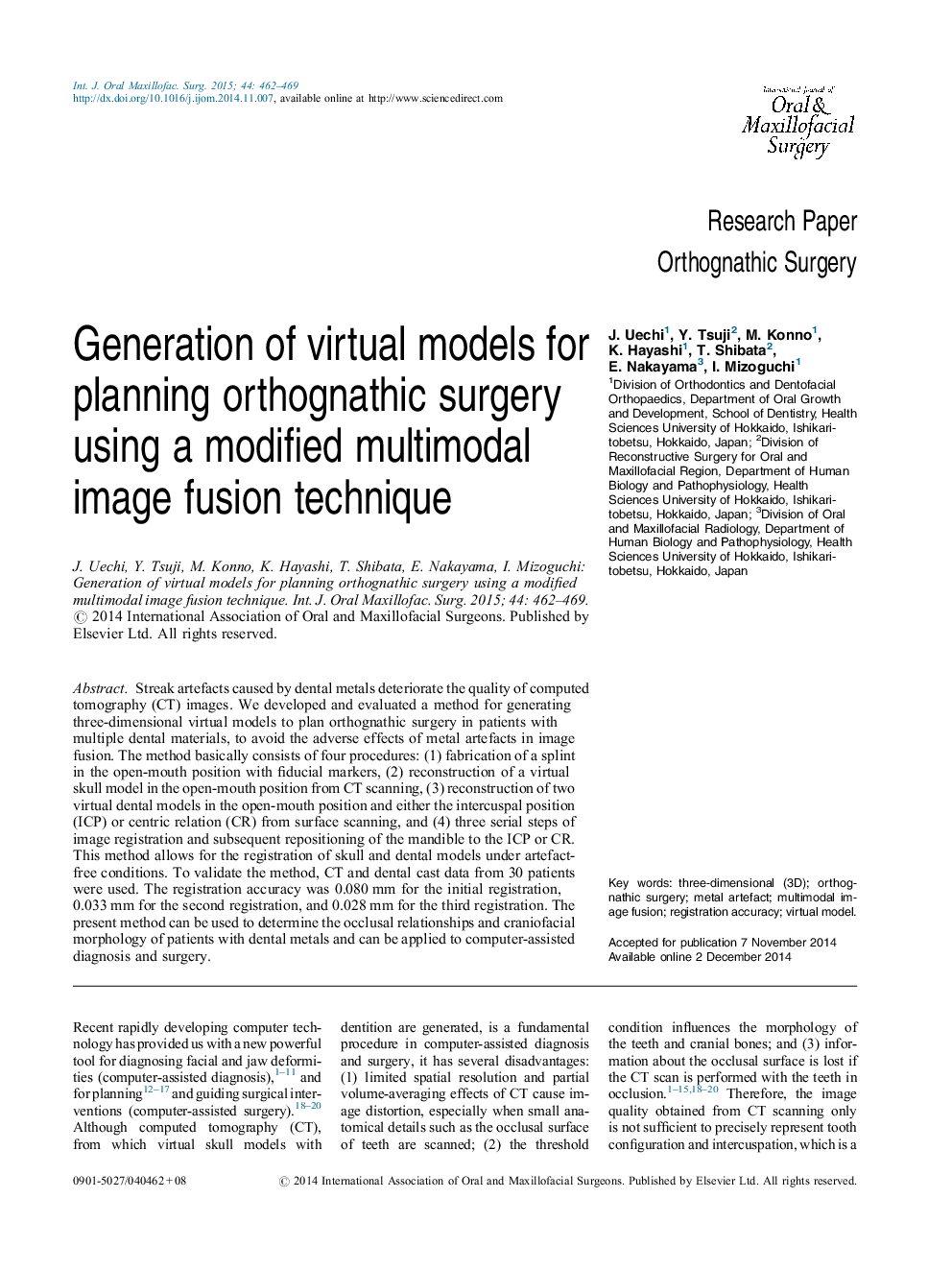| Article ID | Journal | Published Year | Pages | File Type |
|---|---|---|---|---|
| 6052340 | International Journal of Oral and Maxillofacial Surgery | 2015 | 8 Pages |
Streak artefacts caused by dental metals deteriorate the quality of computed tomography (CT) images. We developed and evaluated a method for generating three-dimensional virtual models to plan orthognathic surgery in patients with multiple dental materials, to avoid the adverse effects of metal artefacts in image fusion. The method basically consists of four procedures: (1) fabrication of a splint in the open-mouth position with fiducial markers, (2) reconstruction of a virtual skull model in the open-mouth position from CT scanning, (3) reconstruction of two virtual dental models in the open-mouth position and either the intercuspal position (ICP) or centric relation (CR) from surface scanning, and (4) three serial steps of image registration and subsequent repositioning of the mandible to the ICP or CR. This method allows for the registration of skull and dental models under artefact-free conditions. To validate the method, CT and dental cast data from 30 patients were used. The registration accuracy was 0.080Â mm for the initial registration, 0.033Â mm for the second registration, and 0.028Â mm for the third registration. The present method can be used to determine the occlusal relationships and craniofacial morphology of patients with dental metals and can be applied to computer-assisted diagnosis and surgery.
